Pedda Amberpet, which is around 14 kilometres from the bustling Dilshuknagar in Hyderabad is home to idol makers from Kolkata. At a 60x100 feet shed filled with the smell of wet earth, clay Ganeshas ranging from 8 inches to 6 feet in height are at different stages of completion. “This year, the idol is unique in its decoration,” points out Sunkara Srinivas, the owner of the workshop. His words are borne out by bundles of glossy cloth and shimmering chumkis (sequins) kept in a corner, idols sporting a pagdi for headgear and a pattu panche (silk garment).

For a decade now, Srinivas has maintained the tradition of making eco-friendly Ganesha idols. “PoP (Plaster of Paris) idols might be cheaper, but sculpting an idol that is biodegradable will protect the environment and also inspire future generations to make it their choice,” he says, adding the artisans from Kolkata live in Hyderabad for four months to make clay Ganesha idols.
Srinivas works as a make-up artist at Ramoji Film City and takes a three-month break during this season for Ganesh idol preparations. Since 2018, in association with the Rotary Club, Srinivas has also been teaching students of around 150 schools to make clay Ganesha idols., “ Matti Vinayukudi toh poojinchandi, mee intlo ne nimmajanam chesi, neellu Tulasi mariyu poola mokkaku poyandi (Worship a clay idol and immerse it at your home and pour the water to Tulasi and flowering plants) ’ urges Srinivas.
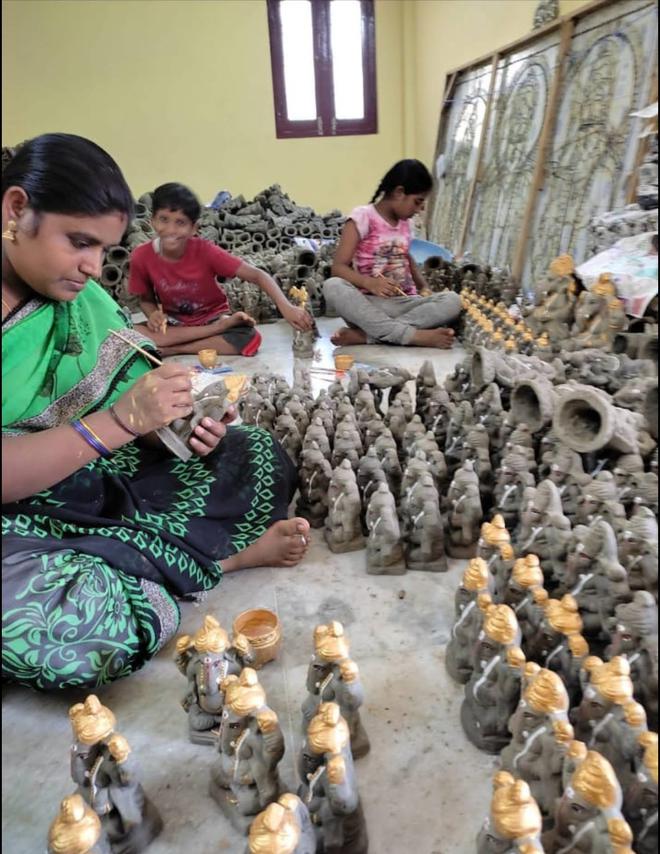
At the workshop, preparations begin with sourcing six lorries of Kolkata mitti (each lorry carries 20 tonnes of soil). “A small quantity of soil is first dried and water is added slowly to make it harden. We then apply chalk powder or gingelly oil in a PoP/cement mould and press it in to get the shape. We unmould the idol after five days and add natural colours,” explains Srinivas adding that it was a challenge to protect the idols from the rains this year.
Another workshop nearby is bustling with people arriving to check on clay Ganesha idols of 4 to 14 feet. “Here, the artisans make a framework and create a mould of dry grass around the plank; a figurine is made of chaff, straw and clay and dried in sunlight. We use only Kolkata Ganga mitti because of the finesse,” explains Pavan Reddy. Later, a dash of natural colour is added to the idols. Weather permitting, it takes around 20 days to complete a four-foot idol, adds Pavan, who set up his first clay Ganesha workshop in 2021 with five workers. Last year they sold around 148 idols, one of which showcased a four-foot Ganesha idol killing the Coronavirus, paying a tribute to frontline workers like doctors, health workers, the police and municipal staff. This year, five artisans from Kolkata have spent around five months creating 450 idols.
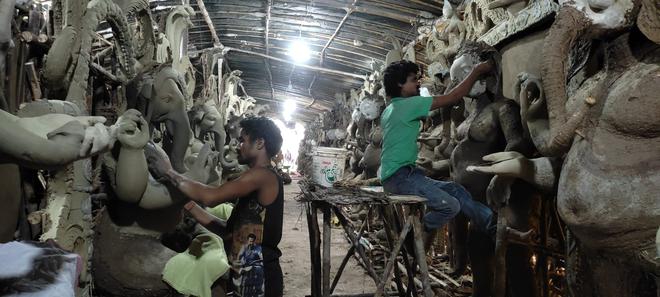
At Ranajit Bal’s workshop on Dairy Farm road in Secunderabad, artisans are adding finishing touches to the Ganesh idols. If some are working on the idol’s jewellery, some are on the limbs. The recent rains delayed the drying process of the clay Ganeshas, so they are trying to keep the shed free of excessive moisture with more light bulbs.
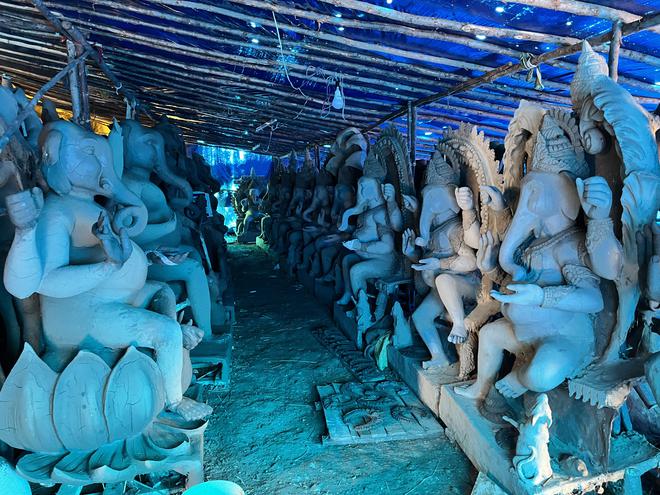
Ranajt says, “A lot of factors need to be kept in mind when the natural weather conditions are not conducive. Unlike plaster of Paris (PoP), clay needs extra care. Too much heat will crack it, and too much moisture will make it difficult to apply paint. We usually finish the frame much ahead so that the foundation is strong.”
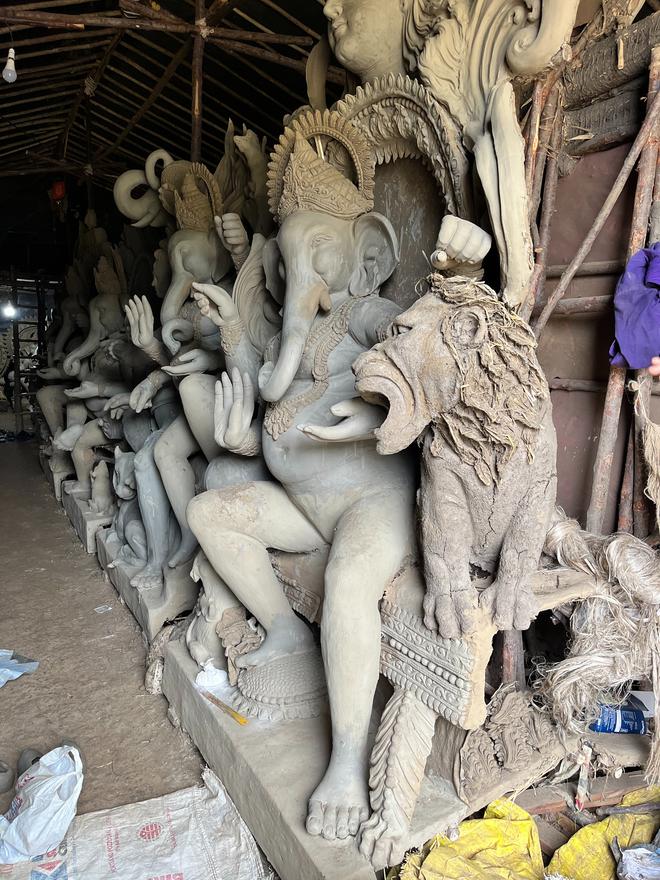
The frame for all idols is prepared with hay to which a paste – made with natural shredded jute fibre, soil and water – is applied. Once that dries and the structure feels strong enough, fine clay and mud are applied continually to give the structure the perfect shape and look.
Ranajit’s father had set up the workshop at Secunderabad more than 20 years ago; later, Ranajit took over. Currently, more than 30 artisans from Bengal work there.
Though the demand for clay idols has gone up in Hyderabad, Kolkata resident KK Mondol, who has been running the idol-making units in the city for the past 17 years, faced losses in the last two years due to the pandemic. “ We made 100 theme-based clay Ganeshas in 2021 but with subdued celebrations, we could sell only 50,” he recalls.
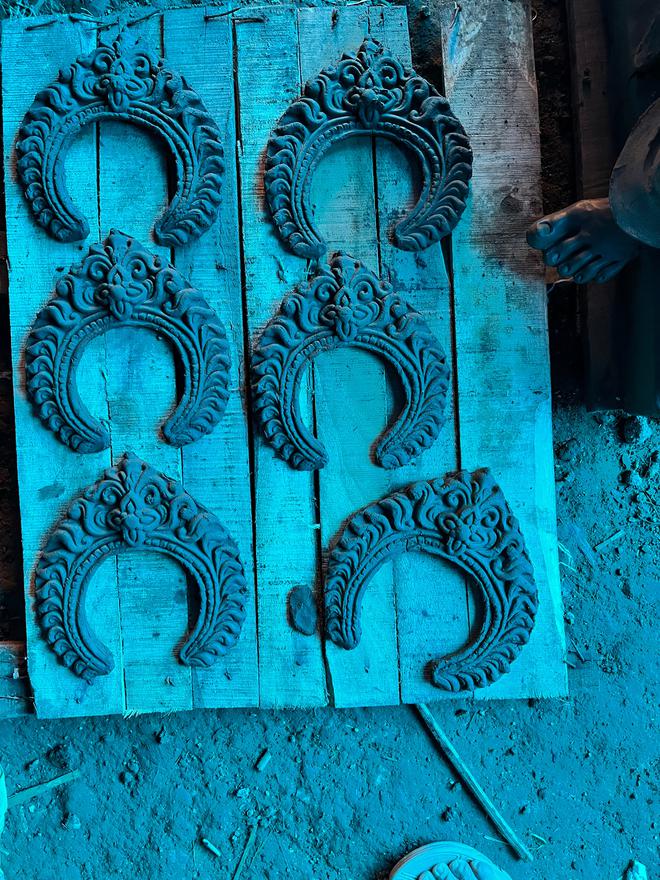
Mondol’s first clay workshop was at VV Function Hall in Jambagh, employing 10 artisans from the Pal community in Bengal known for their idol-making skills. He now has a unit in Barkatpura with 30 artisans from Kolkata. “We innovate with different styles and add one novel theme so that it stands out from the rest,” says Mondol. This year, the themes include Jurassic Park and a little Ganesha standing tall on a KGF statue.
With 10 days to go for Vinayak Chavithi, these workshop owners hope pandals in Hyderabad will welcome clay Ganeshas.







